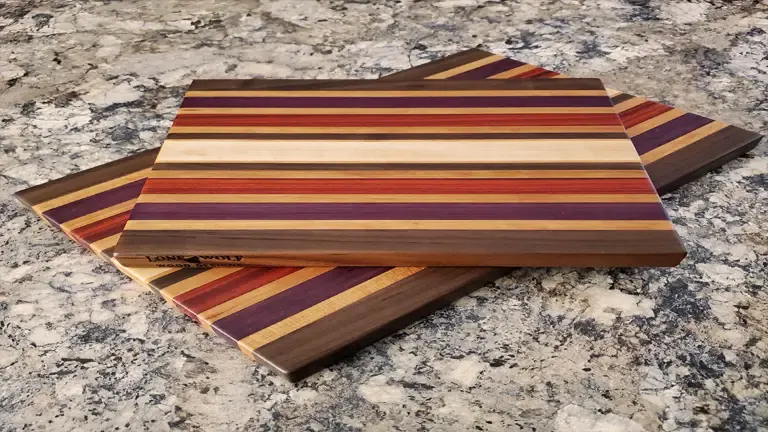Japanese Plum Lumber
- August 3, 2023
- 0 comment
Japanese Plum lumber, derived from the Prunus salicina tree native to Japan and China, is a captivating hardwood renowned for its exceptional qualities. Its popularity among woodworkers and artisans stems from its exquisite aesthetic appeal, durability, and versatility in various woodworking applications. The wood’s fine grain and alluring color, ranging from reddish-brown to deep purple, lend an elegant touch to finished projects.

As Japanese Plum lumber ages, its hues intensify, further enhancing its visual allure. Moreover, the wood’s excellent workability makes it a joy to work with using both hand and machine tools, allowing craftsmen to create intricate designs and smooth finishes. It readily accepts various finishes and polishes, resulting in a radiant luster that accentuates the natural beauty of the wood.
In addition to its aesthetic qualities, Japanese Plum lumber exhibits desirable physical properties. With an average dried weight of 40 lbs/ft^3 and specific gravity ranging from 0.64 to 0.70, it strikes a balance between being relatively lightweight and possessing enough density for stability. The Janka hardness of 1,370 lbf ensures good resistance to wear and impact. Its impressive Modulus of Rupture (16,900 lbf/in^2) and Elastic Modulus (1,900,000 lbf/in^2) further underscore its strength and structural capabilities. While its resistance to decay and insects may be limited, proper treatment and maintenance can extend its lifespan for outdoor use.
| Property | Description |
|---|---|
| Common Name(s) | Japanese Plum, Japanese Almond |
| Scientific Name | Prunus salicina |
| Distribution | Japan, China |
| Tree Size | Medium-sized, typically 30-40 feet tall |
| Average Dried Weight | 40 lbs/ft^3 (640 kg/m^3) |
| Specific Gravity | 0.64 to 0.70 |
| Janka Hardness | 1,370 lbf (6,100 N) |
| Modulus of Rupture | 16,900 lbf/in^2 (116.6 MPa) |
| Elastic Modulus | 1,900,000 lbf/in^2 (13.1 GPa) |
| Crushing Strength | 9,420 lbf/in^2 (65.0 MPa) |
| Shrinkage | Radial: ~3%, Tangential: ~6%, Volumetric: ~9% |
Characteristics:
Color/Appearance:
Japanese Plum lumber displays a visually captivating color palette, ranging from a stunning reddish-brown to deep purple hue. As the wood ages, its color deepens and becomes richer, adding a touch of elegance to finished projects. This distinct coloring, combined with attractive streaks and patterns found in the wood, enhances its visual appeal and makes it a preferred choice for woodworking projects that require a unique and refined appearance.


Grain/Texture:
The wood of Japanese Plum exhibits a fine and uniform texture, lending a smooth and sophisticated look to its surfaces. The straight to interlocked grain pattern further contributes to its elegant appearance. This grain characteristic allows the wood to take stains and finishes exceptionally well, resulting in a smooth and flawless finish that highlights its natural beauty.
Rot Resistance:
While Japanese Plum lumber possesses several desirable traits, its natural resistance to decay is limited. As a result, the wood is susceptible to rot and insect attacks if exposed to moisture and outdoor elements. To maximize its lifespan for outdoor applications, it is crucial to apply appropriate wood treatments and carry out regular maintenance to protect the wood from decay and pest infestations.
Workability:
Japanese Plum wood is renowned for its excellent workability, making it a favorite among woodworkers and artisans. It responds well to both hand and machine tools, enabling effortless cutting and shaping during the crafting process. Moreover, the wood finishes smoothly and takes on a beautiful polish, showcasing its inherent luster and adding a touch of refinement to the final product.
Odor:
Unlike some woods that emit distinct odors, Japanese Plum wood typically lacks any noticeable scent, allowing it to be used without concern for its aroma.
Allergies/Toxicity:
There have been no widespread reports of allergies associated with Japanese Plum lumber. However, as with any woodworking material, it is advisable to use proper protective equipment to minimize the risk of irritation or allergic reactions when working with this wood.
Pricing/Availability:
Japanese Plum lumber is relatively rare outside of its native regions of Japan and China. This limited distribution can impact its availability in global markets, making it less common than other more widely available hardwoods. As a result, Japanese Plum lumber may command a higher price compared to common hardwoods due to its exclusivity and unique visual appeal.
Sustainability:
The sustainability of Japanese Plum lumber hinges on responsible harvesting practices and proper forest management. Implementing sustainable practices ensures that the supply of Japanese Plum wood remains stable and can meet the demands of future generations. It is essential for manufacturers and consumers alike to prioritize responsible sourcing to protect this valuable natural resource.
Common Uses:
Japanese Plum lumber finds versatile applications in a range of woodworking projects. It is highly sought after for crafting exquisite furniture, elegant cabinetry, and musical instruments like guitars and woodwinds, thanks to its tonal properties. The wood is also turned into attractive ornamental objects, adding artistic flair to various decorative pieces. Traditional woodworking crafts also benefit from the wood’s unique color and grain, making it an ideal choice for creating intricately designed items. Its ability to combine beauty and workability makes Japanese Plum lumber a cherished material for artisans and craftsmen seeking to create exceptional and distinctive pieces.


FAQs:
- Is Japanese Plum lumber suitable for outdoor projects?
Japanese Plum lumber is not highly resistant to decay and is not recommended for outdoor projects without proper treatment and maintenance. - Does the wood require any special finishes or treatments?
Japanese Plum lumber can be finished using a variety of products, including oil-based and water-based finishes. Applying a clear protective coating can enhance its natural beauty and durability. - Is Japanese Plum wood easy to find outside of Japan and China?
Due to its limited distribution, Japanese Plum lumber might be more challenging to find outside of its native regions. - Can I use Japanese Plum for musical instrument making?
Yes, Japanese Plum wood is commonly used for making musical instruments like guitars and woodwinds due to its tonal properties and aesthetic appeal. - How does Japanese Plum lumber compare to other exotic hardwoods?
Japanese Plum lumber’s unique color and grain patterns make it a desirable option for woodworking projects, but its availability and pricing may vary compared to other more common hardwoods.






Leave your comment